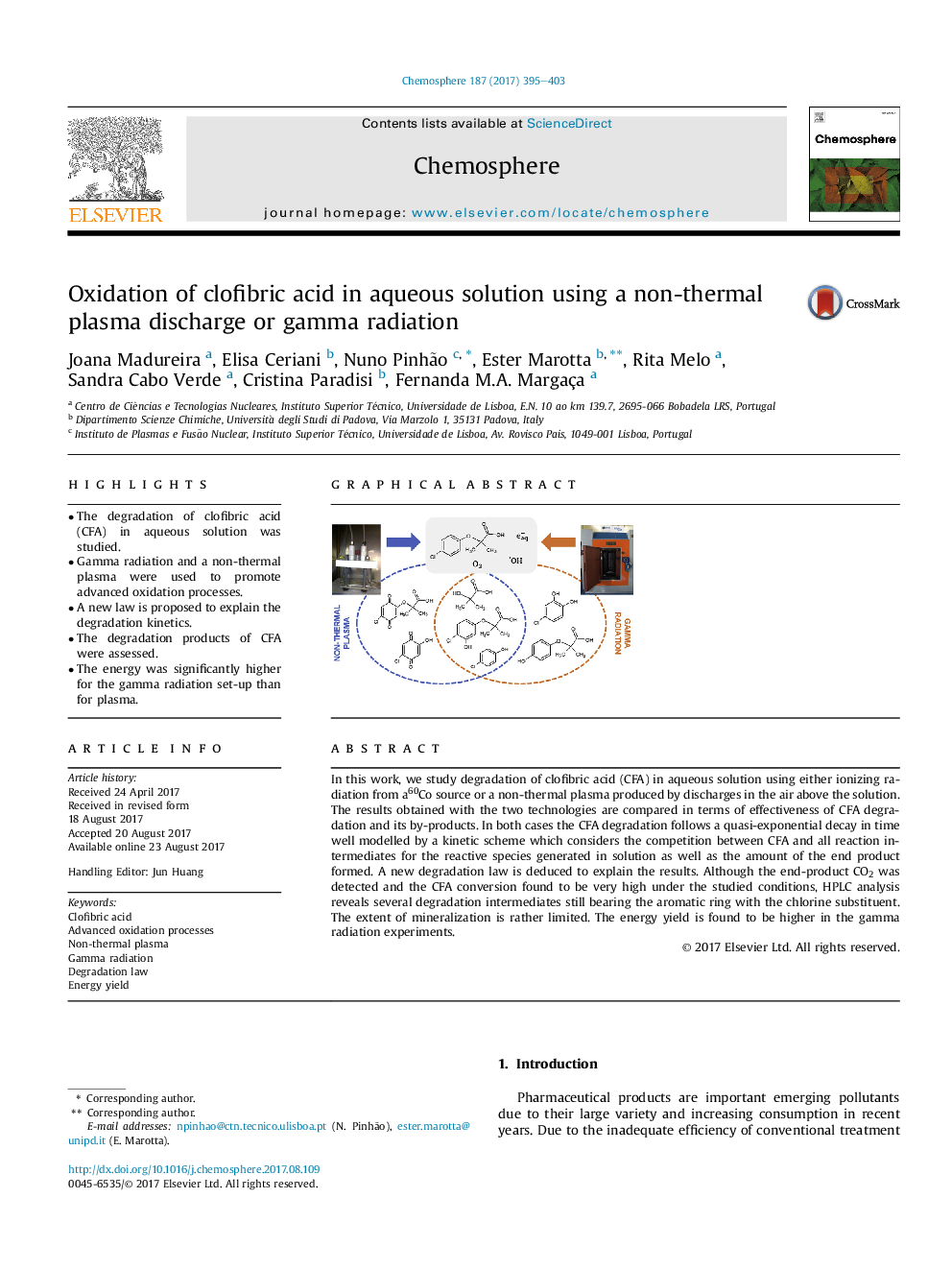| کد مقاله | کد نشریه | سال انتشار | مقاله انگلیسی | نسخه تمام متن |
|---|---|---|---|---|
| 5746459 | 1618784 | 2017 | 9 صفحه PDF | دانلود رایگان |
- The degradation of clofibric acid (CFA) in aqueous solution was studied.
- Gamma radiation and a non-thermal plasma were used to promote advanced oxidation processes.
- A new law is proposed to explain the degradation kinetics.
- The degradation products of CFA were assessed.
- The energy was significantly higher for the gamma radiation set-up than for plasma.
In this work, we study degradation of clofibric acid (CFA) in aqueous solution using either ionizing radiation from a60Co source or a non-thermal plasma produced by discharges in the air above the solution. The results obtained with the two technologies are compared in terms of effectiveness of CFA degradation and its by-products. In both cases the CFA degradation follows a quasi-exponential decay in time well modelled by a kinetic scheme which considers the competition between CFA and all reaction intermediates for the reactive species generated in solution as well as the amount of the end product formed. A new degradation law is deduced to explain the results. Although the end-product CO2 was detected and the CFA conversion found to be very high under the studied conditions, HPLC analysis reveals several degradation intermediates still bearing the aromatic ring with the chlorine substituent. The extent of mineralization is rather limited. The energy yield is found to be higher in the gamma radiation experiments.
167
Journal: Chemosphere - Volume 187, November 2017, Pages 395-403
